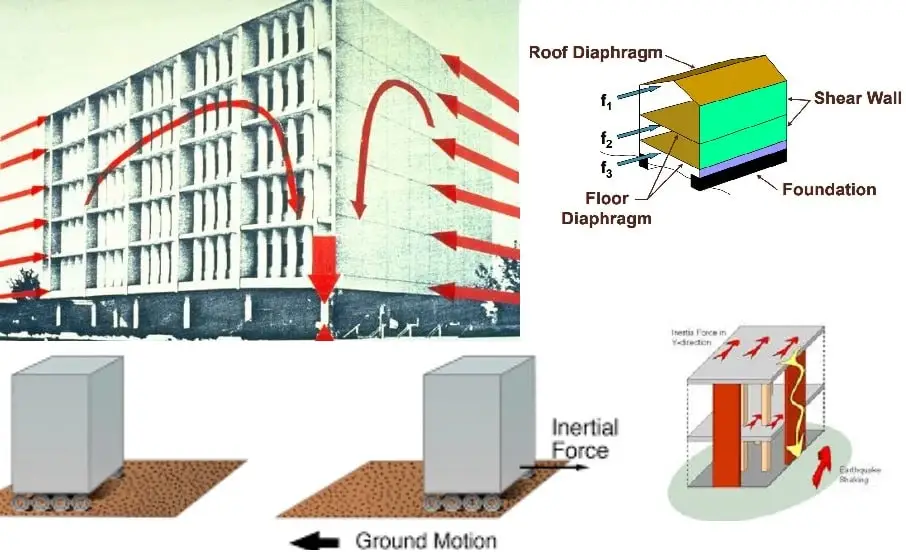Structures and how an earthquake affects them
Earthquakes are the most hazardous natural hazard that cause substantial damage to structures. According to reports, disregarding the ways in which a quake affects buildings and shoddy construction practices are two sources of errors that pose a grave threat to structures.
Because of this, a thorough understanding of the seismic effects on a structure is crucial, and architects and contractors must consider the influence of seismic forces on buildings to implement preventative measures against structural failures and collapses.
When an earthquake strikes a structure, it generates inertia forces that can be extremely destructive, resulting in deformations and horizontal and vertical swaying. Following is a discussion and presentation of these effects.
What are the Earthquake Effects on Structures?
1. Structures’ Inertia Forces
Inertia is the tendency of the roof structure to persist in its original position. The inertia forces can cause shearing of the structure, which can concentrate stresses on the structure’s weak walls or junctions, leading to failure and possibly total collapse. Lastly, greater mass corresponds to a greater inertia force, which is why lighter structures withstand earthquake swaying better.
2. The Influence of Deformations on Structures
When a building experiences an earthquake and the ground begins to shake, the building’s foundation moves with the ground. However, the movement of the roof would differ from that of the structure’s foundation. This difference in movement generates forces within columns that tend to return them to their original position.
3. Shaking Horizontal and Vertical
Horizontal Shaking: During an earthquake, horizontal swaying is the back-and-forth or side-to-side movement of the ground. It occurs when seismic vibrations, generated by the earthquake’s source releasing energy, propagate through the Earth’s crust. When these waves reach a specific location, they cause the ground to move in various horizontal orientations.
Vertical Shaking:During an earthquake, vertical swaying, also known as vertical ground motion, is the up-and-down movement of the ground. It is the propagation of seismic vibrations vertically through the Earth’s crust.
The vertical swaying is typically weaker than the horizontal shaking, but it can still have significant effects, especially in areas with soft or loose soil.
During an earthquake, both horizontal and vertical motion can have destructive effects. These swaying patterns are studied by engineers and seismologists to design structures that can withstand the forces generated by seismic events and to develop building codes and guidelines for earthquake-resistant construction.
Disclaimer: This content is provided solely for your review. Erusu Consultants takes no liability for this article. The reader is advised to form their own opinion. Please consult a Structural Engineer before making any final decisions.






